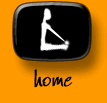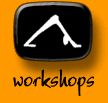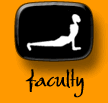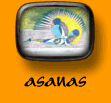

 |
 |
 |
 |
 |
 |
|
DOWNDOG | EAGLE | COBRA | HERO | HALF MOON | CORPSE | GATE
TRIANGLE | PEACOCK | LOCUST | COBBLER | SHOULDER STAND HEADSTAND | BRIDGE | CAMEL | COW FACE | UP BOW | INVERTED STAFF SEATED WIDE ANGLE | HEAD TO KNEE | TORTOISE | DANCER NOOSE  |
| Garudasana ~ Eagle Pose Images by Nancy Van Kanegan Here's one way to get into Garudasana that I've synthesized from Bikram instructor Liz Meyers and several other teachers. Stand with the feet about two feet apart. Extend your left arm straight in front at shoulder height. Swing your right arm undeneath the left so that the right elbow is just behind the left. Bend the left arm at the elbow and bring the backs of the hands toward each other. You can keep the hands in that position (holding a strap if necessary to keep the hands close) pressing the elbows together. Or you can grab the left wrist with the right hand, interlace fingers and fold them down, or press the palms, interlace the thumbs and keep the little finger side straight forward, not skewed to the right. Keeping the arms in that position, bend the knees several inches. Then, shifting your weight to the left foot, lift the right leg high and swing it over the left. You can either rest the right toes on the floor to the outside of the left foot and work there. Or you can twist the right foot and hook it behind the left leg just above the ankle. If you can't get the toes all the way around, just get them to the back of the leg. Gaze at a focal point on the floor or wall and stretch the elbows forward and up while you take the sitting bones down. The energetic center for this pose is the center of the pelvis. So as you breathe in the pose, sink down from the center of the pelvis, and from the center of the pelvis extend up. Hold for about five breaths, max out the sinking and lifting on the last exhale, then inhale up and untwine as you exhale. Follow the same steps for the other side. For me, one of the hardest parts of this pose is trying to keep the hips and shoulders even with each other and facing in the same direction I started. When I hook my right foot behind the left leg, I tend to rotate my pelvis to the left. So I have to consciously work the right hip back to keep the pelvis aligned. It helps to notice which way you're facing before you entwine the legs, then see if you can continue to face that way as you work the pose, and not end up twisting to the side. To give more stretch to the hips and more work to the legs, try this variation. After you are in the pose, bend forward, keeping your back straight, and rest your right elbow on your right knee. You'll have to bend the knee of the standing leg more to do this. Great stretch! You can also try crossing the arms the other way. That is, with the right leg over the left, have the right arm over the left instead of under it. Notice how the stretch changes, and fly like an eagle to greater awareness. Text by Tim
Noworyta |
||
|
E-mail: info@yogamind.com | Return Home :: mindfully designed by braddon.com :: |